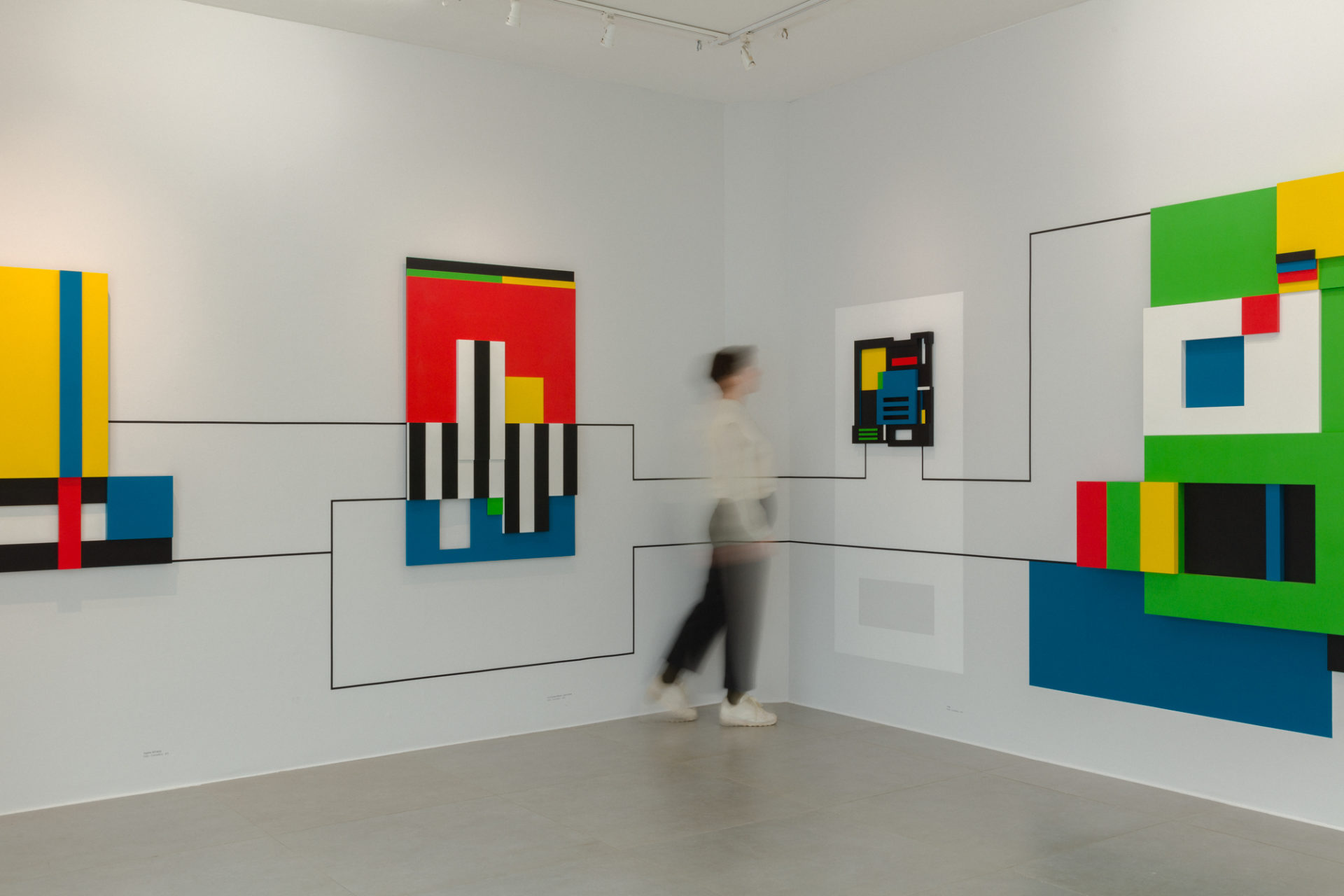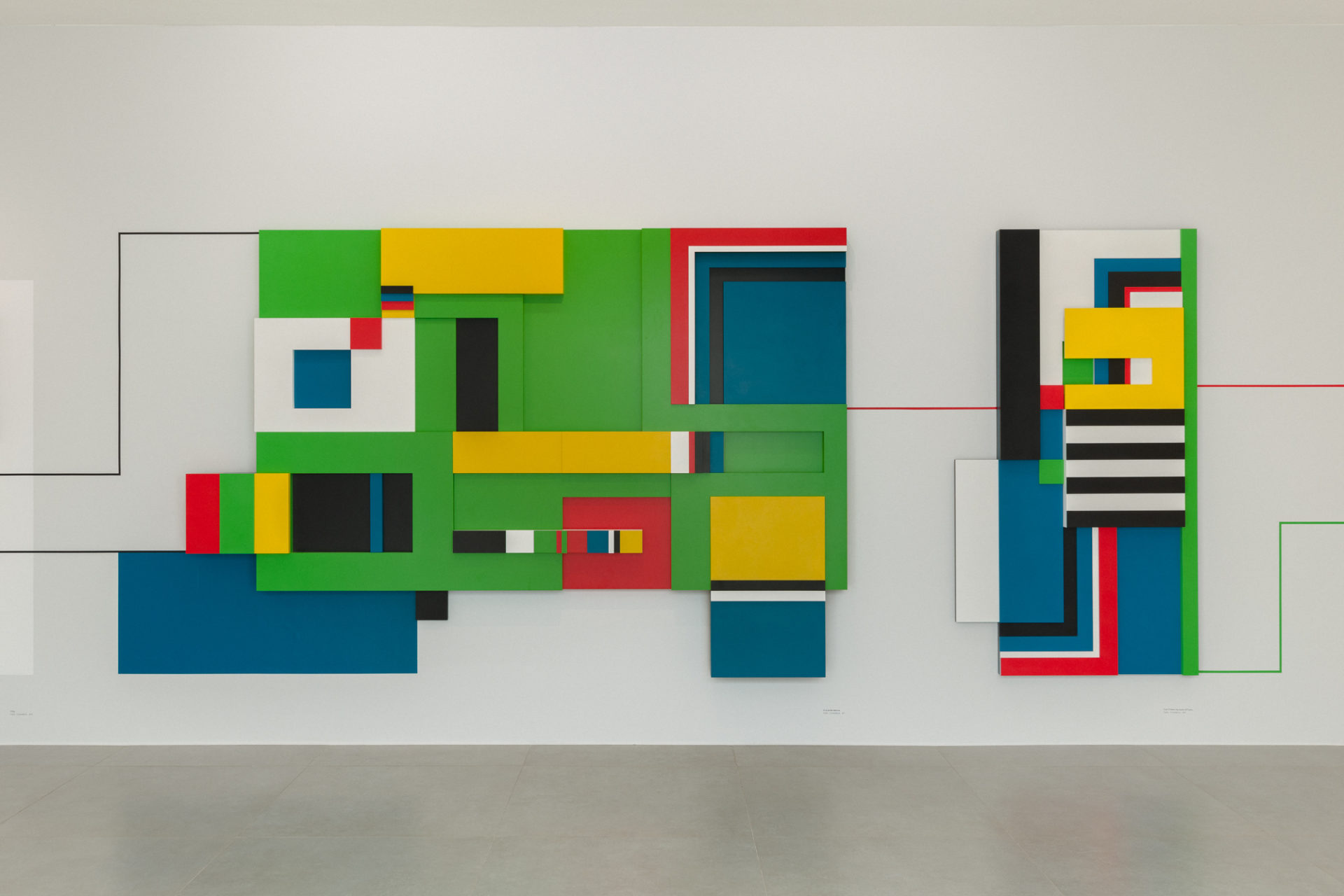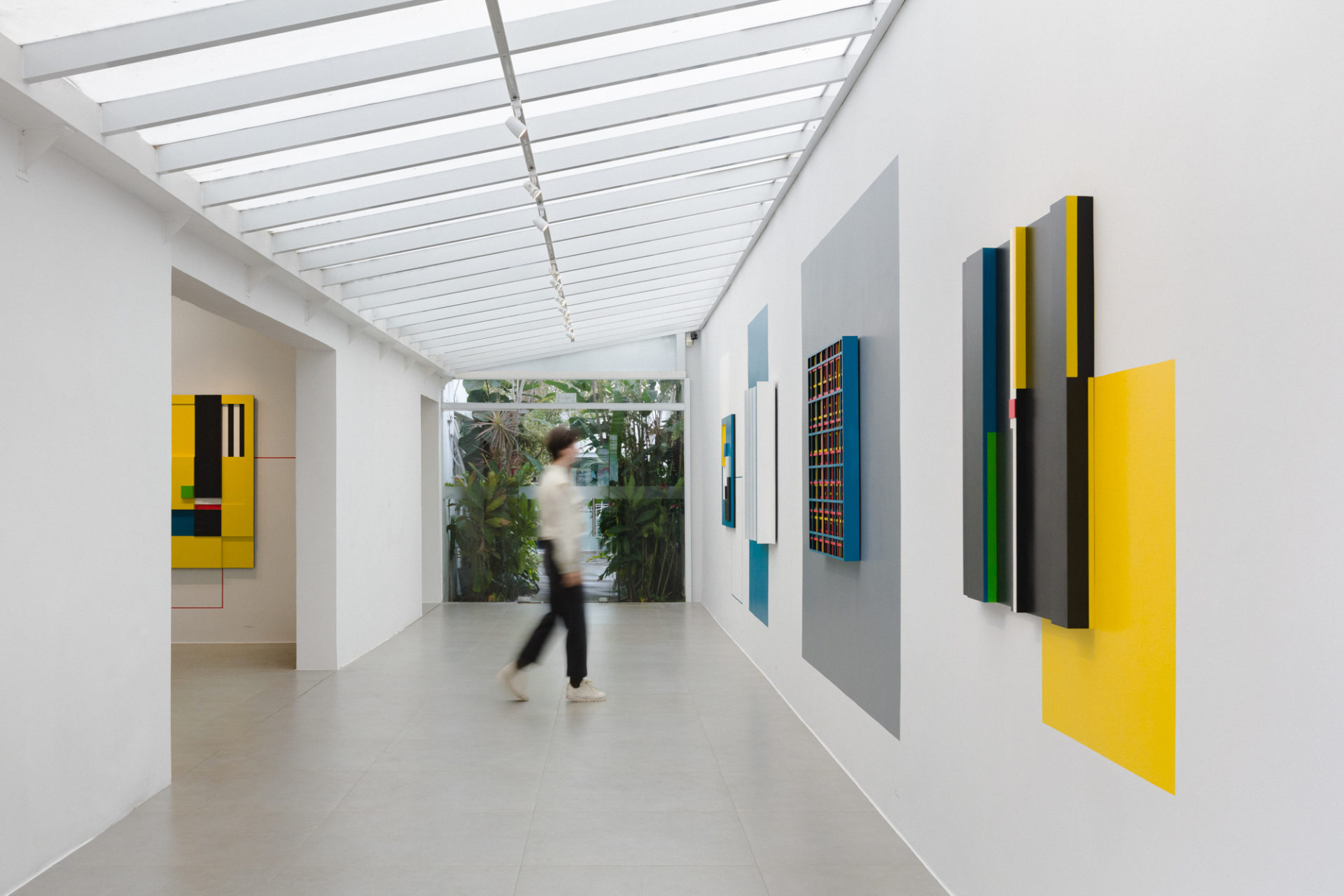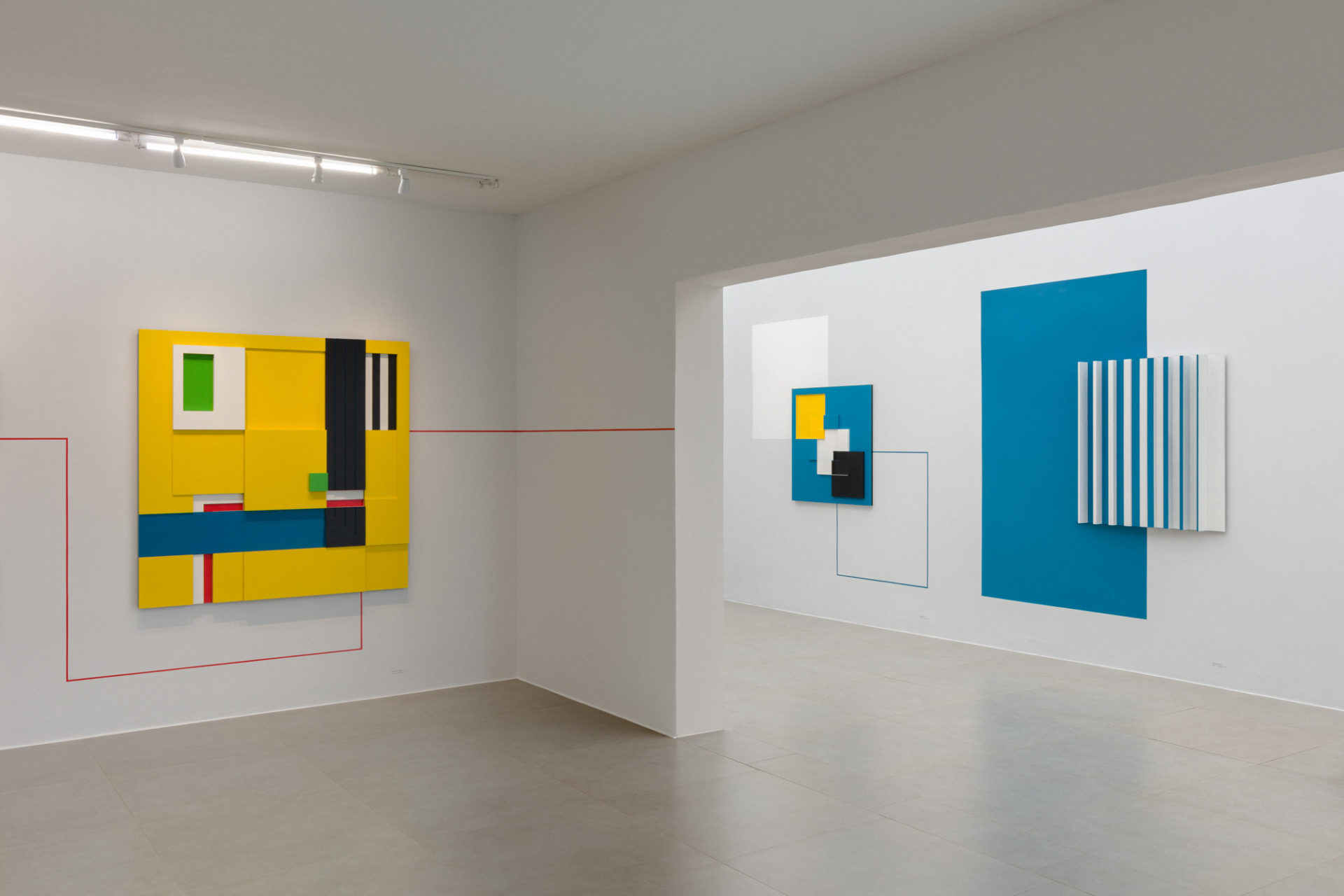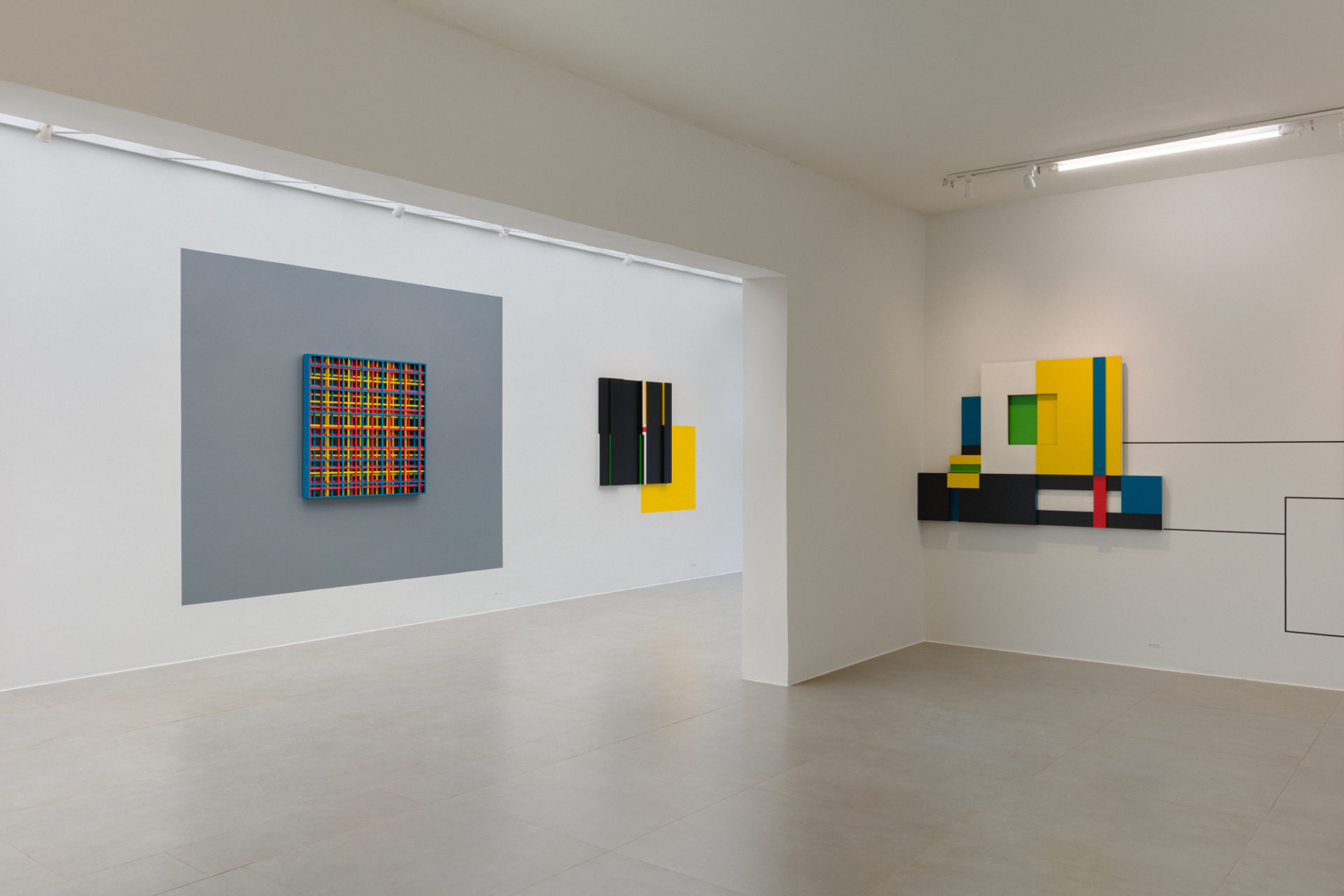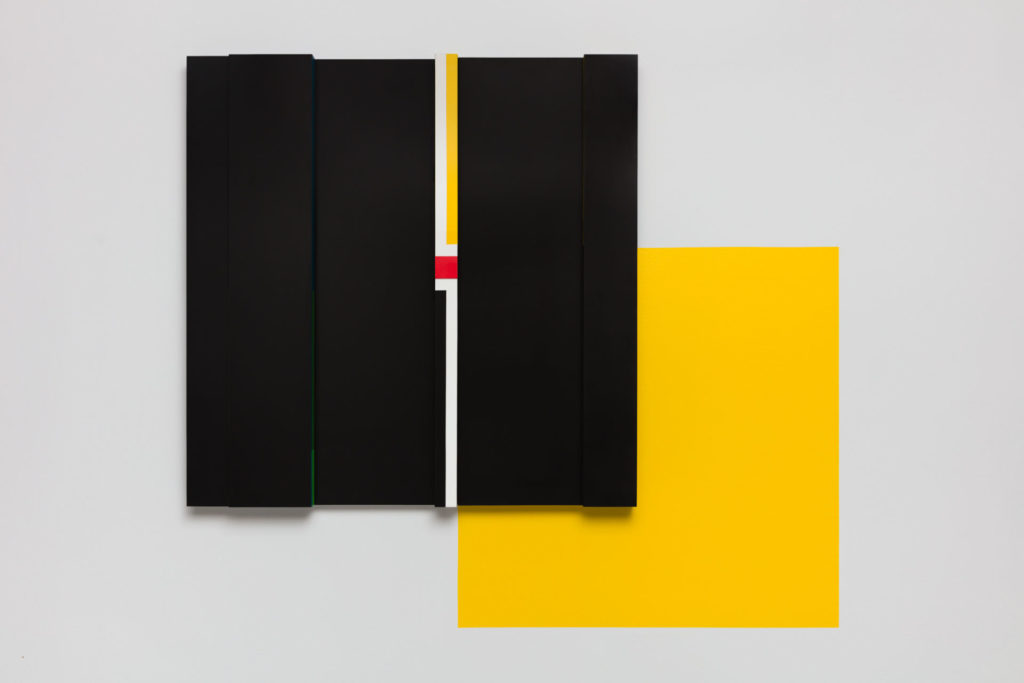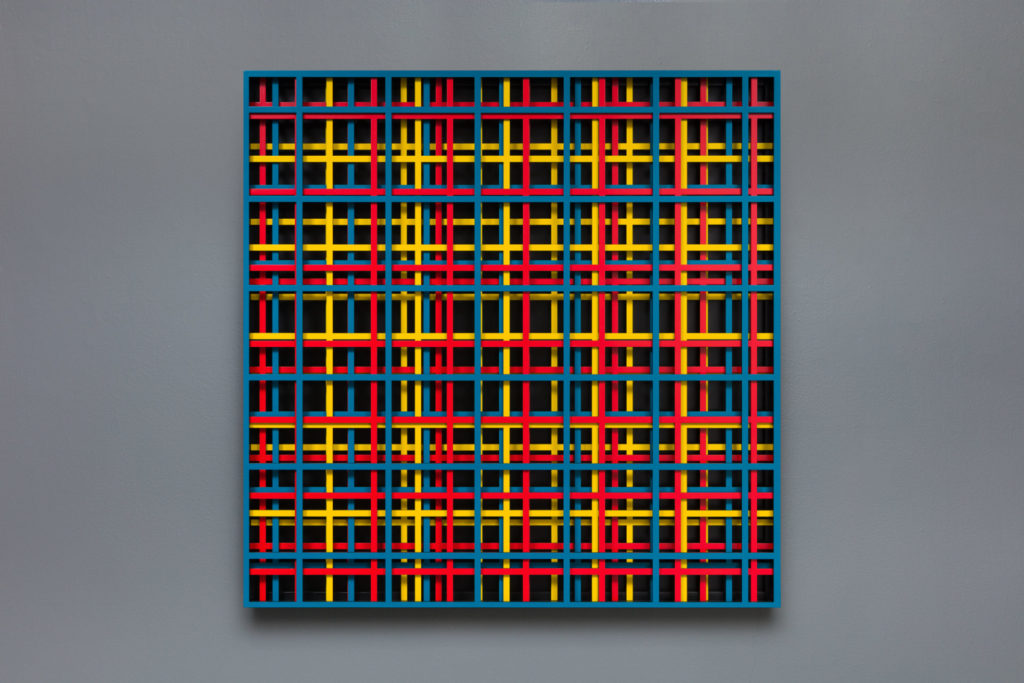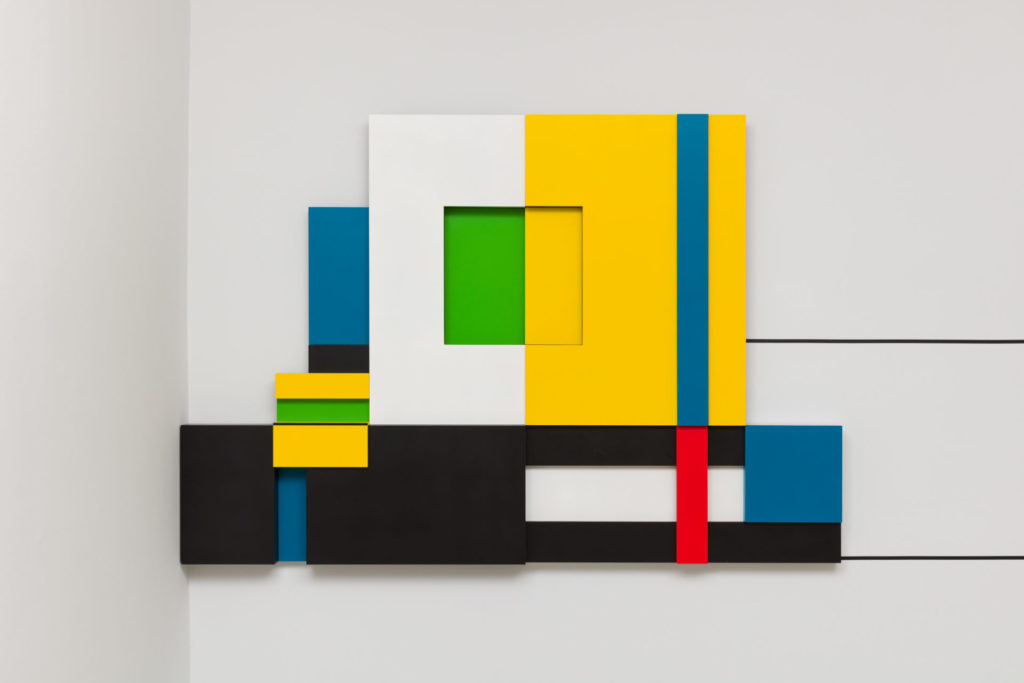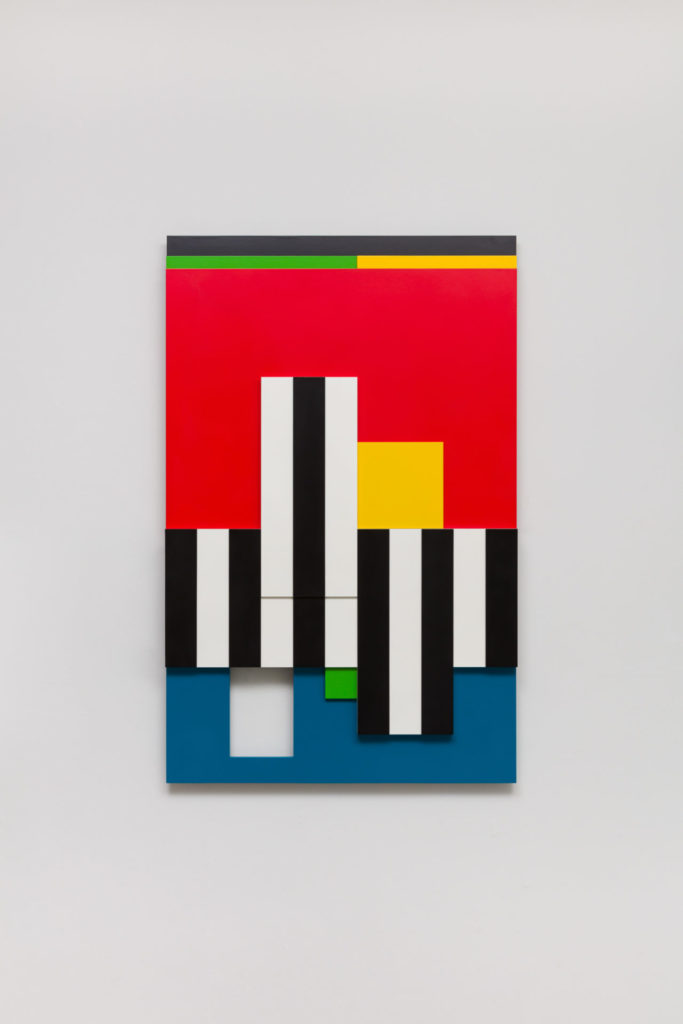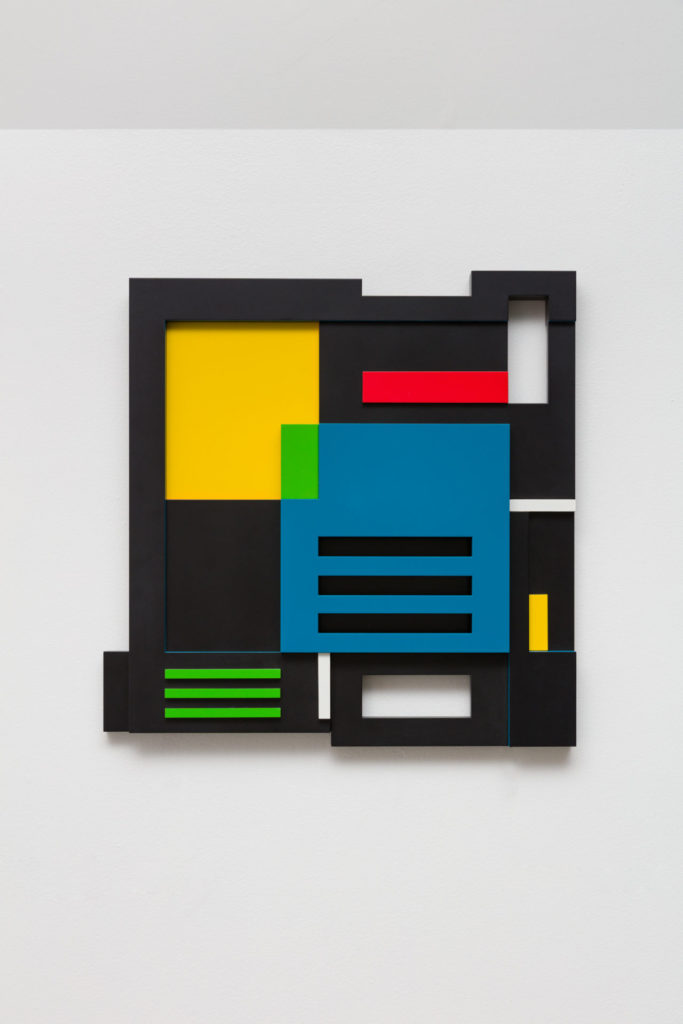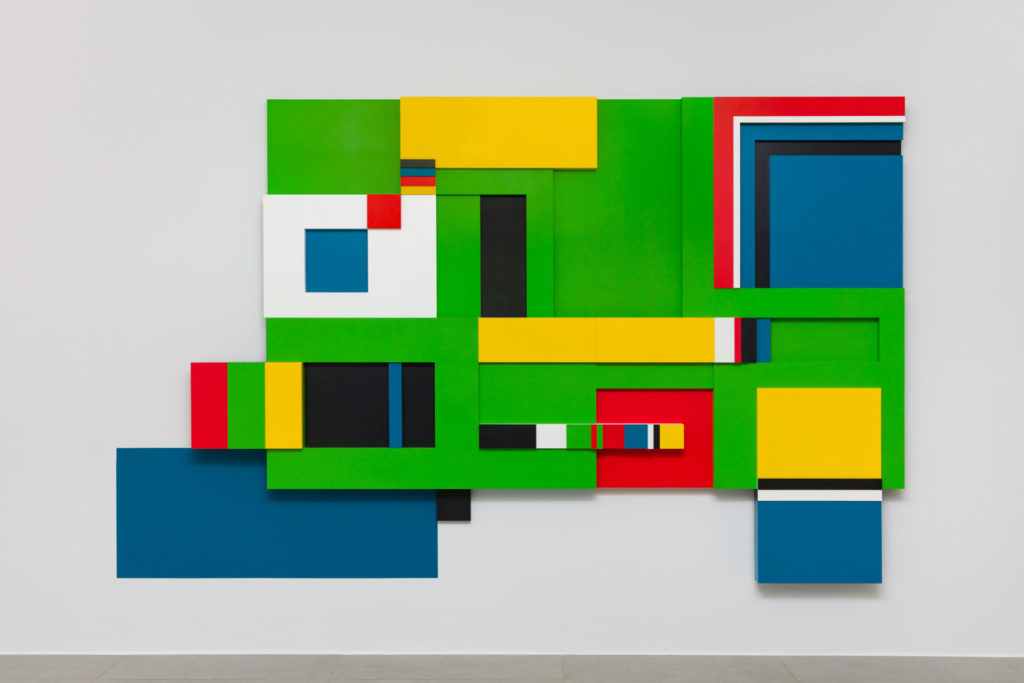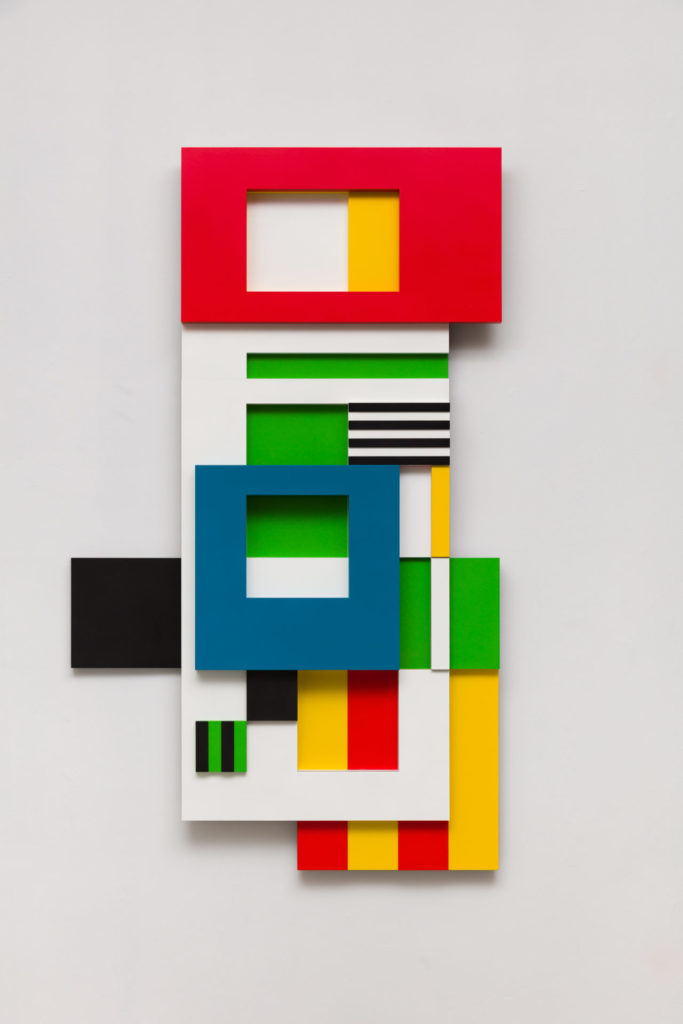Roll up for the mystery tour
There’s a color that haunts me and that I hate,
There’s a color that creeps into my fear.
Why colors have strength
To persist in our soul,
like ghosts?
There’s a color that haunts me hour by hour
Your color becomes the color that is my soul.
Ricardo Reis.
At the crossroads, between blue and green, following the red line, next to the yellow of a Van Gogh that incurs in Rio de Janeiro (“Vincent and Rio”), there are Frankie Valli (“Can’t take my eyes off you 🙂 and “Zé Keti”. It may seem like an unusual convergence, but here there are no rules other than the colors that are repeated and, like Ritornello1 in a score, they gradually define and reference the spaces to be deciphered.
If in poetry Rimbaud reveals the colors of the letters: “A negro, E branco, I rubro, U verde, O azul, vowels: I will still unravel their latent mysteries”2, in “Fatos Cromáticos”, by Eduardo Coimbra, the color, which invades the walls, frames and connects each of the works, it is an enigma to be discovered. Is the blue of “Quasiláteros” the same water that overflows in “Mar del Plata”? And the yellow, which emerges in “In a Sunset Mood”? Is it the sun or just the light that flashes on the “Chip” and lights the candle in a colorful samba of “Ze Keti”?
Constructed by superimposing a set of different geometric shapes, black, white, yellow, green, red and blue, Edu’s works explore spatiality and label rectangles, squares, gaps and crevices, through the recurrence of color. In the same way that the architects Renzo Piano and Richard Rogers, when designing the Georges Pompidou Center in Paris, defined different colors for the electrical, hydraulic and locomotion systems as an identification strategy by association3, Coimbra informs us that color is a place, however, it is up to us to displace it from any architectural functionality to name it to the satisfaction of the imagination.
The sculptures, similar to models, a support frequently used by the artist, are actually “dream models, which propose other readings of our more human landscape”, as Adolfo Montejo Navas4 well defined. When faced with them, “get ready for the mysterious journey” in which such systems of representation have no commitment other than daydreaming: we want to cross them, enter the stairs, touch the keys, open the blinds to see the sea and, who knows, see, heavy and slowly, a large walrus sitting in an English garden waiting for the sun5.
Paulo Kassab Jr.
1. In music, The Ritornelo is a symbol represented by two vertical bars, followed by a colon. The two points face the direction in which we should go. This sign is usually used in pairs, which indicate the stretch to be repeated.
2. Rimbaud, Vowels. Translation: Augusto de Campos
3. At the Georges Pompidou Center in Paris, The blue pipes are used for air conditioning, the green pipes represent the water circuit, the yellow pipes contain the electrical ducts, the white pipes indicate the ventilation towers, while all the red pipes symbolize related elements. circulation in the building.
4. Adolfo Montejo Navas, This is not a model, 2003 – text included in the book Eduardo Coimbra, publisher Casa da Palavra, 2004
5. Excerpt from the song I’m the Walrus, The Beatles, 1967
